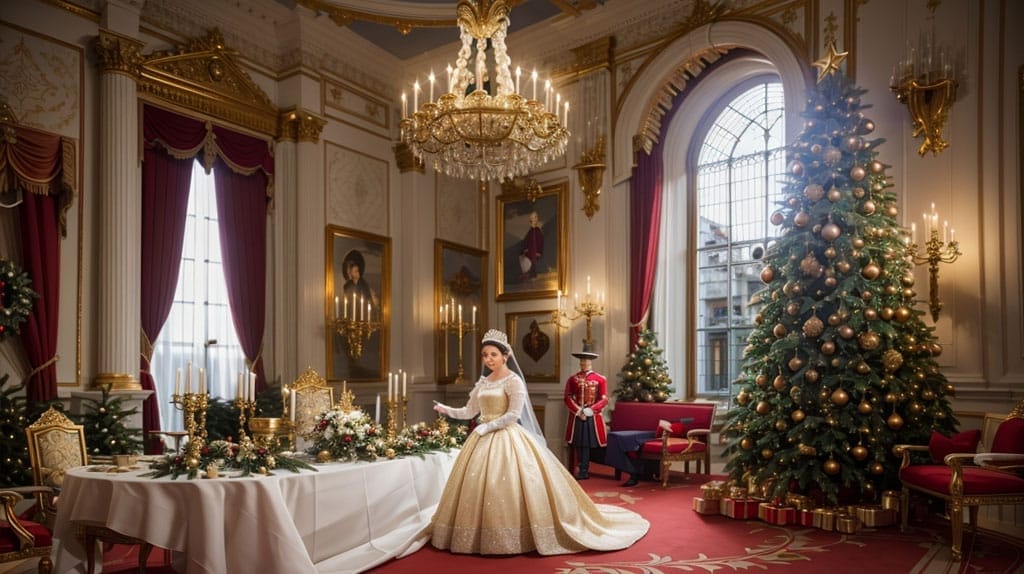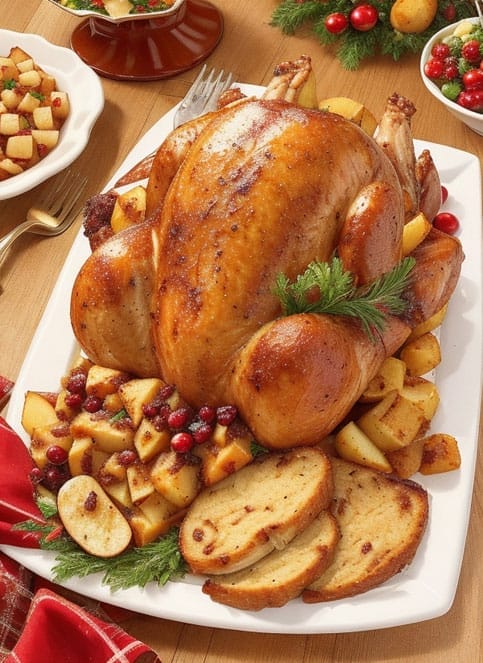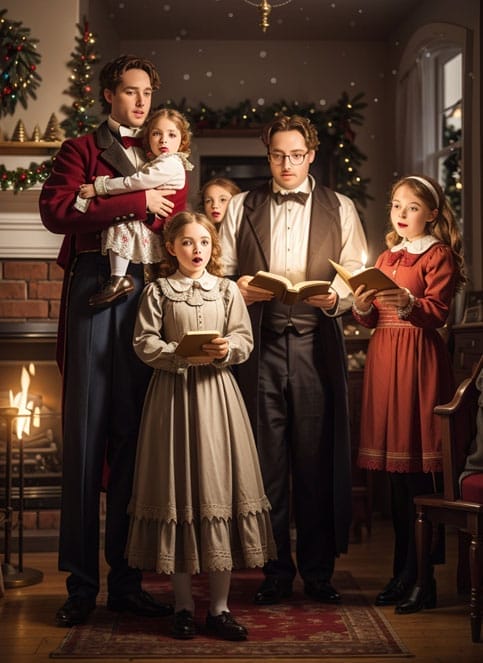How Victorian Christmas Traditions Shaped Modern Celebrations
When you think of Christmas, you may envision lights, carol singing, and festive decor. These traditions have been an integral part of the holiday season for generations, but did you know that many of them have their roots in Victorian England? The Victorians were known for their love of elaborate festivities and their influence can still be seen today in many of our modern Christmas celebrations.

Key Takeaways:
- Many of our modern Christmas traditions can be traced back to Victorian England.
- The Victorians were known for their elaborate festivities and love of community.
- Victorian Christmas traditions include carol singing, ornate decorations, and lavish feasts.
- The spirit of giving and charity during Christmas has its roots in Victorian philanthropy.
- Understanding the origins of these traditions can foster a deeper appreciation for the holiday season and its rich history.
The Origins of Victorian Christmas Traditions
Imagine a Christmas without a tree, carols, or even a turkey dinner. It might seem impossible, but that was the reality in England before the Victorian era. In the early 19th century, Christmas was a relatively low-key affair, often celebrated only by the wealthy.
It was Queen Victoria and her German husband, Prince Albert, who helped popularize many of the traditions we associate with Christmas today. Prince Albert introduced the idea of the Christmas tree, which he had brought with him from his native Germany. The Queen and her family were also depicted in popular Christmas illustrations, which helped to shift the holiday from a religious occasion to a family-centered celebration.
As the 19th century progressed, more and more people began to embrace Christmas as a time for festivities, gift-giving, and family get-togethers. The Victorian era saw the rise of several customs that are still widely observed today, including Christmas cards, carol singing, and giving to charity.
The Victorian era began in 1837, when Queen Victoria ascended to the throne. This period of British history is known for its social, political, and economic changes, as well as its emphasis on morality and family values. Christmas during the Victorian era was a reflection of these values, with an emphasis on the importance of spending time with loved ones and celebrating the season with joy and goodwill.

One of the most enduring symbols of Victorian Christmas is the Christmas tree. This tradition began in Germany in the 16th century and was brought to England by Prince Albert in 1841. The Queen’s Journal describes how the royal family decorated their tree with “little candles” and “all sorts of bonbons, gilt gingerbread, and gold foil angels.” The image of the royal family gathered around their tree helped to popularize the idea of a Christmas tree as a centerpiece of holiday decor.
Another popular Victorian-era tradition was the sending of Christmas cards. The first commercial Christmas card was produced in 1843 by Sir Henry Cole, a civil servant who wanted to encourage people to send greetings to family and friends. The cards, which featured festive illustrations and messages of goodwill, quickly became a popular way to spread holiday cheer.
Aside from gift-giving and decorating, the Victorian era also saw the rise of charitable giving during the Christmas season. This was partly due to the influence of Charles Dickens’ “A Christmas Carol,” which was published in 1843 and quickly became a classic tale of redemption and generosity. Dickens himself was a vocal advocate for social reform and believed that the holiday season was a time to raise awareness of poverty and inequality.
Traditional Victorian Christmas Activities
During the Victorian era, Christmas was a time of festivity and celebration, and many traditions and customs have carried over to modern times. One of the most important aspects of a Victorian Christmas was the embrace of activities that brought families and communities together.
A popular activity during a Victorian Christmas was storytelling, with tales of holiday folklore and ghost stories captivating listeners. Storytelling sessions were typically held in the parlor, around the fireplace, and often accompanied by warm cider or hot chocolate.
Outdoor activities were also enjoyed during the holiday season, with ice skating and sleigh rides providing a thrilling form of entertainment. Families and friends would bundle up in their warmest clothes and take to the icy ponds and snowy hills for some good old-fashioned fun.
These traditional Victorian Christmas activities not only brought joy and merriment to the holiday season, but also served to strengthen familial and community bonds. Today, many of these activities remain popular during the holiday season, continuing to bring people together and foster a sense of togetherness and joy.
Victorian Christmas Decorations
Victorian Christmas decorations were characterized by an abundance of greenery, candles, and ornate displays. The Victorians believed that the decorations should reflect the festive spirit of the holiday, and they spared no expense in achieving this goal.
Evergreen wreaths, garlands, and swags were popular decorations that adorned the front doors and entryways. Mistletoe, which symbolized love and friendship, was often hung from the ceiling and used as a decoration for kissing games. However, the most significant addition to the Victorian Christmas celebration was the introduction of the Christmas tree.
Prince Albert, Queen Victoria’s German-born husband, is credited with bringing the tradition of the Christmas tree to England. In 1841, he decorated a tree in Windsor Castle with candles, sweets, and small gifts for his family. The idea caught on quickly, and soon, almost every Victorian home had a tree decorated with tinsel, glass ornaments, and candles.
The Victorian Christmas decorations were not limited to the indoors. House fronts were often lit up with fairy lights, while shops and public buildings displayed elaborate window displays featuring Christmas scenes and motifs. The streets were decorated with gas-lit lanterns and wreaths, bringing the festive spirit to the public realm.
Popular Victorian Christmas Decorations:
| Decoration | Meaning |
|---|---|
| Evergreen Wreaths | Eternal life and goodwill |
| Mistletoe | Love and friendship |
| Christmas Tree | Festivity and goodwill |
| Garlands and Swags | Unity and goodwill |
The Victorian Christmas decorations have had a lasting influence on how we decorate our homes during the holiday season. The emphasis on natural elements, such as pine cones and holly, as well as the tradition of hanging stockings by the fireplace, are still prevalent in modern-day Christmas celebrations.
The Victorian era marked a significant shift in how we celebrate Christmas, introducing many traditions and customs that have become integral parts of the holiday season. The Victorian Christmas decorations, with their emphasis on festivity, goodwill, and family, continue to inspire us in creating memorable and festive holiday celebrations.
Victorian Christmas Feast

If there’s one thing that the Victorians were known for, it was their love of lavish feasts, and Christmas was no exception. The centerpiece of their Christmas table was often a roasted goose, served with all the trimmings like gravy, cranberry sauce, and mashed potatoes. And of course, no Victorian Christmas feast was complete without a rich and flavorful plum pudding, often served with a dollop of whipped cream.
But it wasn’t just the food that made a Victorian Christmas feast so special. The entire ritual surrounding the meal was something to behold. After the main course was finished, the dining table was often cleared and set with bowls of nuts and fruit for guests to snack on while they chatted and sipped on glasses of port or sherry. And in true Victorian fashion, the evening would end with a performance of festive music or a reading of a heartwarming Christmas story.
It’s easy to see how the Victorian Christmas feast has influenced our modern-day holiday festivities. Many families still serve a roast dinner with all the trimmings and traditional desserts like fruitcake and mince pies. And the spirit of gathering together with loved ones for a joyous meal still remains a cornerstone of the holiday season.
Victorian Christmas Gift Giving
During the Victorian era, gift-giving was an integral part of Christmas celebrations. It was not just about the act of giving, but also the thought and effort that went into selecting and presenting a gift. Personalized or handmade presents were particularly valued, as they conveyed a sense of care and affection.
Gifts were exchanged among family and friends on Christmas Day, but some also chose to exchange them on Boxing Day, which was a public holiday in England. The type of gift given varied depending on the person’s social status and relationship. Wealthier individuals may have exchanged expensive items such as jewelry or household goods, while the working class may have given homemade items or small trinkets.
The practice of Christmas gift-giving was further popularized by Charles Dickens’ “A Christmas Carol,” which portrayed the act of giving as an essential part of the holiday spirit. The story’s protagonist Ebenezer Scrooge famously transforms from a miserly figure to a generous benefactor, emphasizing the importance of generosity and kindness during the festive season.
Today, Victorian Christmas gift-giving customs continue to influence our celebrations. We still exchange gifts with loved ones on Christmas day and often prioritize thoughtful and personalized presents. The spirit of giving is still an integral part of the holiday season, and charitable acts and donations are frequently encouraged during this time of year.

Victorian Christmas Caroling
One of the most beloved Victorian Christmas traditions was caroling. This custom began during the Victorian era and remains a cherished aspect of the holiday season to this day. Caroling involved singing traditional Christmas hymns, such as “Silent Night” and “Deck the Halls,” while going door to door in the community.
Victorian carolers often dressed in their finest clothing and carried candles to light their way. The act of caroling was not only a way to spread holiday cheer but also to connect with neighbors and build a sense of community. Many churches also held caroling events, which were a chance for congregants to come together and celebrate the joy of the season.
Christmas carols were an integral part of Victorian Christmas traditions and customs. They were a way to express gratitude, celebrate the birth of Jesus, and bring people together during the holiday season. Today, caroling remains a cherished tradition, with groups of singers spreading joy throughout communities and helping to keep the spirit of Victorian Christmas alive.
Victorian Christmas Charity and Giving Back
One of the most notable aspects of a Victorian Christmas was the emphasis on charity and giving back. From orphanages and hospitals to the poor and needy, philanthropic initiatives were an integral part of the holiday season.
Victorian society placed great importance on the idea of helping those less fortunate during Christmas. Many organizations, such as the Salvation Army and the YMCA, were founded during the Victorian era with the goal of providing aid to those in need.
During the Christmas season, people would give generously to charities and undertake various forms of volunteer work. The philanthropic efforts of Victorian society paved the way for modern-day charitable acts, inspiring us to give back to our communities and those in need.
The tradition of giving back during the holidays is now deeply ingrained in our modern-day celebrations. From donating to food banks and toy drives to volunteering at soup kitchens and homeless shelters, the spirit of charity and compassion that defined a Victorian Christmas continues to inspire us to make a difference in the lives of others.
So, as you celebrate this holiday season, take a moment to reflect on the Victorian holiday traditions that have shaped our modern-day celebrations. Let us continue to carry on the spirit of charity, compassion, and giving that was so integral to a Victorian Christmas.
FAQ
Q: How did Victorian Christmas traditions shape modern celebrations?
A: Victorian Christmas traditions played a significant role in shaping modern celebrations. Many of the customs and practices observed during the Victorian era, such as decorating Christmas trees, exchanging gifts, and singing carols, continue to be an integral part of our festive traditions today.
Q: What were the origins of Victorian Christmas traditions?
A: Victorian Christmas traditions originated and evolved during the Victorian era, largely influenced by Queen Victoria and Prince Albert. They sought to create a warm and family-centered holiday atmosphere, popularizing customs such as sending Christmas cards, hanging stockings, and hosting elaborate feasts.
Q: What were some traditional Victorian Christmas activities?
A: Traditional Victorian Christmas activities included carol singing, parlor games, and storytelling. Families would gather for festive entertainment, enjoying the warmth of shared experiences and creating cherished memories during the holiday season.
Q: How were Victorian Christmas decorations different?
A: Victorian Christmas decorations were known for their opulence and ornate designs. Evergreen wreaths, mistletoe, and the introduction of the Christmas tree were popular during this time, adding a touch of elegance and festivity to homes and public spaces.
Q: What were the typical dishes served at a Victorian Christmas feast?
A: A Victorian Christmas feast often featured indulgent dishes such as roast goose, plum pudding, and mince pies. These rich and flavorful foods were enjoyed as part of the festive celebration, symbolizing abundance and good cheer.
Q: How did Victorian gift giving influence modern Christmas traditions?
A: Victorian gift giving emphasized the sentiment and thoughtfulness behind presents. Handmade or personalized gifts were highly valued, highlighting the importance of showing love and care through thoughtful gestures. This practice continues to inspire the spirit of giving during the holiday season.
Q: Why was caroling important during the Victorian era?
A: Caroling during the Victorian era was a way to spread holiday cheer and bring communities together. Groups of carolers would go door-to-door, singing traditional Christmas carols and fostering a sense of joy and unity during the festive season.
Q: What role did charity play in Victorian Christmas celebrations?
A: Charity and giving back were significant aspects of Victorian Christmas celebrations. The era was marked by philanthropic initiatives and acts of kindness towards the less fortunate. These traditions continue to inspire acts of charity and goodwill during the holiday season today.




